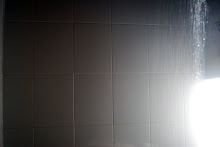
This painting represents the definitive outcome of several studies Giacomo Balla made following his observation of a partial eclipse of the Sun caused by the planet Mercury, which occurred on November 7, 1914. The eclipse takes place in the upper center of the painting, with a small circle, Mercury, encroaching on a large circle, the Sun. The dazzle of white triangles nearby can be explained as the impact on the naked eye as Balla looked away from his lens. The green cone may also refer to a specific retinal color effect experienced by Balla as he peered down his telescope. Balla was continuing his experiments in conveying the sensations of movement through space with the use of transparent planes, rectilinear and curving forms
I thought this was an interesting parallel to the post I made a few weeks ago with my version of a telescope.

I wonder if he had an easel set up next to his telescope, or if he simply used the telescopic observation as a point of departure for something altogether imaginative. I'm always a little repelled by these kinds of paintings. They're referred to as painterly conveyance of the instability of optical perception, but always appear much more stylized; based on inward, non-phenomenal experience instead. WHO KNOWS.
ReplyDeleteI am not fond of the painting itself overall. The historical context is interesting to me though. The telescope business could've been completely made up by the owner of the gallery it was first exhibited in anyhow..
ReplyDelete